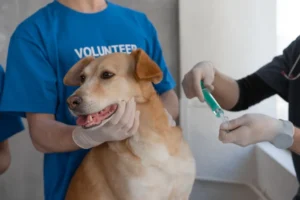Cats are known for their unique and sensitive paws, but have you ever wondered why they are so delicate? Let’s explore the fascinating reasons behind why cats’ paws are sensitive.
Cats’ Paw Sensitivity Explained:
Anatomical Structure of Cat Paws
Let’s take a peek into the fascinating world of cat paws. These intricate little appendages are not just cute but also incredibly complex. The anatomical structure of a cat’s paw is a marvel of nature, finely tuned to help them navigate their environment with grace and precision.
At the core of a cat’s paw are its bones, aligned in a way that allows for flexibility and strength. But what really sets them apart are the sensitive nerve endings that are distributed throughout the paw. These nerve endings act as sensors, constantly sending feedback to the cat’s brain about the texture, temperature, and pressure of the surface they are walking on.
Another crucial component of a cat’s paw is the pads. These soft cushions provide traction and absorb shock when they jump or land, acting as a natural shock absorber. The claws also play a vital role in a cat’s paw structure, aiding in gripping prey or climbing trees effortlessly.
The interplay of these different elements within a cat’s paw is what gives them their remarkable sensitivity and agility. So next time you watch your feline friend effortlessly maneuvering around the house, remember it’s all thanks to their remarkable paw structure.
Importance of Paw Sensitivity for Cats
Have you ever wondered why your cat reacts so strongly when you touch their paws? It’s because paw sensitivity is a crucial aspect of their everyday life. From hunting prey to grooming themselves, a cat’s sensitive paws are essential for their survival and well-being.
When a cat is stalking its prey, their paw sensitivity allows them to silently tread on various surfaces, ensuring they remain undetected. The soft pads and sensitive nerve endings help them feel even the slightest vibrations, giving them a hunting advantage over their unsuspecting prey.
Additionally, a cat’s sensitive paws are vital for grooming. Cats are meticulous groomers, constantly licking their fur to keep clean. Their paws act as little washcloths, helping them reach areas that their tongues can’t. The sensitivity of their paws ensures they can detect any debris or dirt that needs attention.
So, the next time your cat gives you a funny look when you touch their paws, remember that it’s not personal – they’re just fiercely protective of these crucial tools that help them navigate their world with finesse.
Evolutionary Reasons for Sensitive Cat Paws
Cats’ paw sensitivity has evolved over time to serve a crucial purpose in their survival in the wild. The pads on a cat’s paws contain an abundance of nerve endings that allow them to detect even the slightest changes in texture, temperature, or pressure. This heightened sensitivity aids cats in navigating their environment, hunting prey, and avoiding potential dangers. Being able to detect vibrations through their paws helps cats locate prey or predators, giving them a significant advantage in the wild.
Behavioral Manifestations of Paw Sensitivity
A cat’s behavior is heavily influenced by the sensitivity of their paws . Kneading, scratching, and grooming are all common behaviors that stem from this sensitivity. Kneading, which mimics a kitten’s nursing behavior, is a way for cats to show contentment and mark their territory with scent glands in their paw pads. Scratching helps cats sharpen their claws and mark their territory, while grooming allows them to meticulously clean themselves while examining and caring for their paws.
In addition to these behaviors, the sensitivity of a cat’s paws also plays a role in their social interactions . Cats may use their paws to communicate with other cats or humans, showing affection through gentle paw touches or expressing irritation through swipes. Understanding the significance of paw sensitivity can help cat owners better interpret their feline companion’s behaviors and enhance their bond.
- Maintaining a cat’s paw health is essential. Regularly trimming their claws, providing scratching posts, and checking their paws for any signs of injury or discomfort can help ensure their well-being.
- Offering a variety of textures for your cat to explore can enrich their sensory experiences and provide mental stimulation.
- Consider using interactive toys that engage a cat’s paws, encouraging natural behaviors and keeping them physically and mentally active.
By appreciating the evolutionary reasons behind cat paw sensitivity and recognizing how it influences their behavior, cat owners can deepen their understanding of these fascinating feline companions.
Sensory Nerves in Cat Paws
Did you know that cats have an abundance of sensory nerves in their paws? These nerves play a crucial role in their heightened sensitivity. The nerve endings in a cat’s paw are much more concentrated compared to other parts of their body. This increased sensitivity allows cats to easily detect changes in their environment and helps them navigate their surroundings with precision.
One unique aspect of these sensory nerves is that they are extremely sensitive to touch. This is why cats can be so particular about where and how they are petted. Some cats love having their paws massaged gently, while others may not enjoy it as much. Understanding your cat’s preferences when it comes to paw sensitivity can help strengthen the bond between you and your feline friend.
So, next time you notice your cat meticulously grooming their paws or tapping them lightly on a surface, remember that it’s all thanks to the remarkable sensory nerves in their tiny but mighty paws.
How to Care for Your Cat’s Sensitive Paws
Caring for your cat’s delicate paws is essential to keeping them happy and healthy. Here are some tips to ensure you’re providing the best paw care for your feline companion:
Regular Nail Trimming : Keep your cat’s nails trimmed to prevent them from becoming overgrown and causing discomfort. Invest in high-quality cat nail clippers and make nail trimming a part of your regular grooming routine.
Check for Debris : Regularly inspect your cat’s paws for any debris such as dirt, grass, or small objects that may be lodged between their toes. Gently remove any debris to prevent discomfort or potential injury.
Provide Soft Surfaces : Cats love to perch and rest on soft surfaces. Ensure your cat has access to comfortable bedding and cozy spots to prevent any strain on their sensitive paw pads.
Moisturize : Just like our skin can get dry, cat paw pads can also benefit from a little moisturizing. Look for pet-safe paw balms or coconut oil to keep their paw pads soft and hydrated.
Mind the Temperature : Extreme temperatures can be harsh on a cat’s sensitive paws. During hot weather, avoid walking your cat on scorching surfaces, and during winter, protect their paws from cold and icy conditions.
Taking these simple steps to care for your cat’s sensitive paws will not only keep them comfortable but also strengthen the bond between you and your furry friend. So, show those paws some love, and watch your cat prance around happily on their well-cared-for feet.
Why Are Cats’ Paws Sensitive?
Cats have incredibly sensitive paws due to a high concentration of nerve endings in the pads of their feet. These sensitive nerve endings help cats navigate their environment with precision, allowing them to sense changes in texture, temperature, and even vibrations with ease. Additionally, a cat’s paws contain scent glands that release pheromones, aiding in communication with other cats.
Fun Facts About Cat Paws
Polydactyl Cats: Some cats have more than the usual number of toes, a condition known as polydactyly. Ernest Hemingway famously owned a colony of polydactyl cats in Key West, Florida.
Grooming Behavior: Cats spend a significant amount of time grooming their paws, not only to clean themselves but also to regulate body temperature and reduce stress.
Paw Cushions: The thick, fleshy pads on the bottoms of a cat’s paws act as natural shock absorbers, allowing them to move stealthily and quietly.
Paw Preference: Cats, just like humans, can also have a dominant paw when it comes to activities like batting at toys or grabbing treats.
Covered in Fur: Most cats have fur covering the top of their paws, acting as an added layer of protection and insulation.
Paw-some Products for Cat Paw Care
Maintaining your cat’s paw health is essential for their overall well-being. Luckily, there are several products on the market designed to help keep your feline friend’s paws in top condition. Look for paw balms made with natural ingredients such as shea butter and coconut oil to soothe dry, cracked paw pads. You can also consider purchasing cat-friendly nail clippers to keep your cat’s claws trimmed and prevent them from snagging on furniture or clothing.
In addition to grooming products, cat paw moisturizers can help prevent dryness and keep the paw pads supple. These products are especially beneficial for indoor cats who may not have the opportunity to naturally wear down their paw pads through outdoor activities. Remember to consult with your veterinarian before introducing any new products to ensure they are safe for your cat’s specific needs.
The Bond Between Cats and Their Paws
Cats and their paws share a unique and special bond that goes beyond just walking. These furry companions use their paws to communicate, explore, and even show affection. From kneading their favorite blanket to gently touching your face, a cat’s paws play a significant role in their interactions with their human companions.
One reason behind the sensitivity of cats’ paws is the high concentration of nerve endings present in them. This heightened sensitivity allows cats to feel even the slightest changes in their environment, helping them navigate their surroundings with precision. So, when your cat paws at your face or kneads on your lap, it’s not just a random action – it’s a way for them to connect with you on a deeper level.
Next time you see your feline friend grooming themselves meticulously or delicately reaching out to touch you, remember that their sensitive paws are at the heart of these gestures. Embrace the bond you share with your cat through their paws, and cherish these special moments of connection.
Unique Insight: Cats’ paw pads are not just soft cushions; they also contain scent glands that release pheromones, allowing them to mark their territory and feel more secure in their environment.
The Science Behind Cats’ Sensitive Paws
Paw Pad Structure: Cats’ paw pads are designed with a thick layer of fatty tissue that provides cushioning and insulation. This structure not only helps them walk silently but also enhances their sensitivity to touch.
Nerve Endings: Cats have a high density of nerve endings in their paws, making them extremely sensitive to pressure, texture, and temperature. This heightened sensitivity allows cats to explore their surroundings with precision.
Tactile Communication: Cats use their paws to communicate with other animals and humans. From gentle touches to playful swats, their paws play a crucial role in conveying emotions and intentions.
Maintaining Cleanliness: Cats are meticulous groomers, and their sensitive paws enable them to clean themselves effectively. The flexibility and dexterity of their paws allow them to reach every nook and cranny during grooming sessions.
Balancing Act: Cats’ paws help them maintain balance and stability while walking, climbing, and leaping. The intricate network of muscles and tendons in their paws provide them with exceptional agility and coordination.
Understanding the science behind cats’ sensitive paws can deepen your appreciation for these amazing creatures and strengthen the bond you share with your feline friend.
Alex, a passionate animal lover, has experience in training and understanding animal behavior. As a proud pet parent to two dogs and three cats, he founded AnimalReport.net to share insights from animal experts and expand his knowledge of the animal kingdom.









